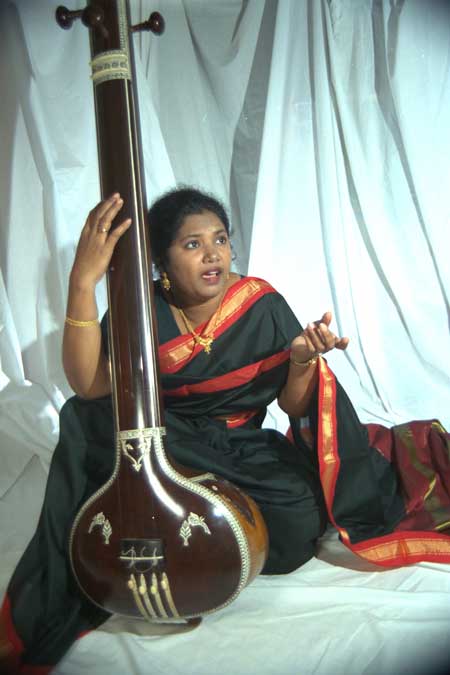
Tanpura is a drone instrument. It resembles a sitar except it has no frets. It has four strings tuned to the tonic. The word “tanpura” (tanpoora) is common in the north, but in south India it is called “tambura”, “thamboora”, “thambura”, or “tamboora”. In the Sindh area of Pakistan it is known as “dambooro”. The tanpura is known for its very rich sound.
There are innumerable variations on the tanpura. One may find box tanpuras, burra katha vinas, Sindhi dambooros, and a host of others. But there are three main styles; the Miraj style, the Tanjore style and the small instrumental version sometimes called tamburi.
By its basic construction, the tanpura is inherently a drone instrument. Through the majority of south Asia, it is played in such a way that the drone is arrhythmic and unobtrusive. However in some folk versions, its technique is more percussive and rhythmic.
| THESE BOOKS MAY NOT BE FOR YOU |
|---|
A superficial exposure to music is acceptable to most people; but there is an elite for whom this is not enough. If you have attained certain social and intellectual level, Elementary North Indian Vocal (Vol 1-2) may be for you. This has compositions, theory, history, and other topics. All exercises and compositions have audio material which may be streamed over the internet for free. It is available in a variety of formats to accommodate every budget. Are you really ready to step up to the next level? Check your local Amazon. |
The Miraj style is the typical north Indian tanpura (tambura). This is the favourite of Hindustani musicians. It typically is between 3 to 5 feet in length. It is characterised by a pear shaped, well rounded tabali (resonator face) and non-tapering neck. It usually has a resonator made of a gourd, but rarely one may find resonators made of wood. This style is shown at the top of this page.
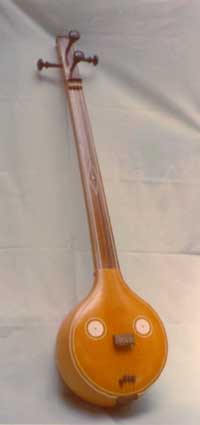
The Tanjore style of tambura is found in the south. This is the favourite for Carnatic musicians. It is also about 3 to 5 feet in length. Unlike the Miraj style, the neck tapers toward the top, and the front plate is very flat. Resonators are almost always of wood. An example of the Tanjore style is shown above.
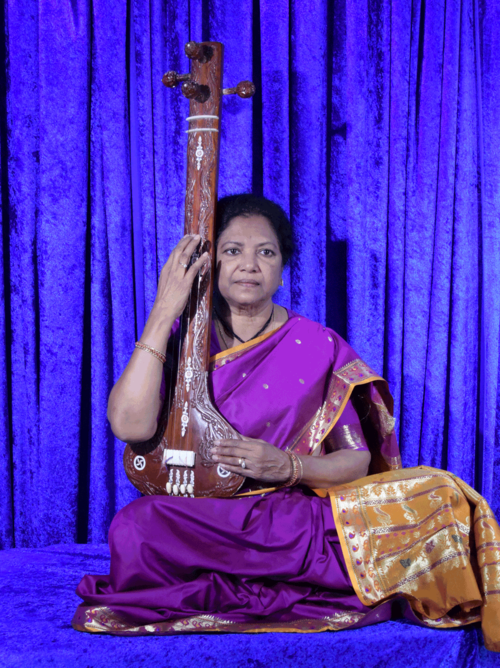
In recent decades the tamburi or instrumental tambura (tanpura) has become popular. Its most striking characteristic is its size. It averages only about 2 to 3 feet in length. It has a very shallow resonator made of wood and only a slightly curved resonator plate (tabali). It usually has four strings but may just as well have 5, 6, or even more strings. The tamburi’s small size means that the playing technique is usually slightly different from the standard tambura. Although the tamburi is generally acknowledged to have an inferior sound, it is the easiest of all the tamburas to maintain. It is extremely portable, it holds its tuning well, and because it is all wood (i.e., no gourds) it is virtually indestructible. These points makes the tamburi very popular with the travelling musician.
Much more information about the tanpura including its playing technique may be found in “Elementary North Indian Vocal: Vol 2” by David Courtney and Chandrakantha Courtney.
Photo Gallery
Click on image
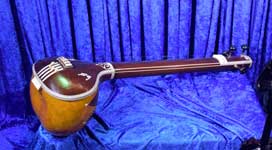
View #1

View #2
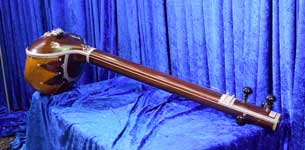
View #3
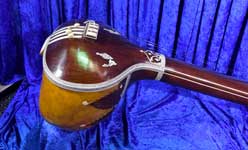
Base
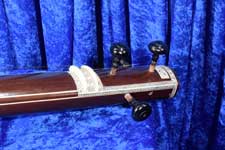
Head

Bridge
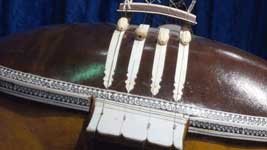
Tuning beads
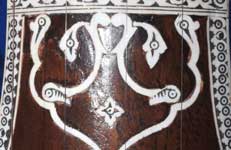
Decoration
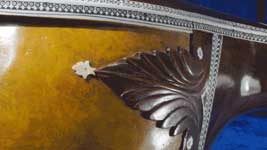
Decorative leaves

Upper bridge and string guides